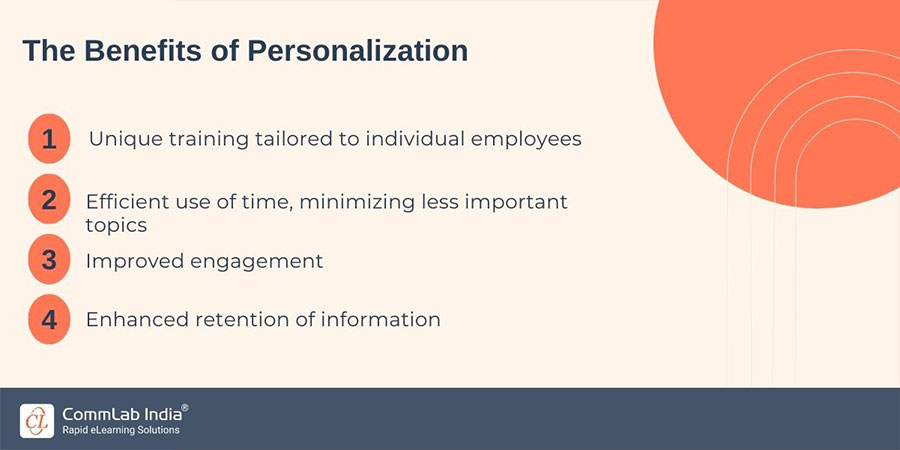5 Ways How Blended Learning Boosts Product Training Efficiency
Want to know how blended learning improves product training’s efficiency? Read on to discover...

The world of corporate training has one clear mission - to empower employees with the knowledge and skills they need to excel in their roles. When it comes to mastering the art of product training, the impact is nothing short of transformative. However, achieving is no easy feat. That's where blended learning enters the scene.
Blended learning is a dynamic approach that blends the best elements of different learning methods such as traditional classroom training, video-based learning, microlearning, etc., to boost the impact of product training. Continue reading as we talk about the five ways in which blended learning revs up your product training to deliver an engaging and impactful learning experience.
What's Blended Learning?
Blended learning, the hero of our story, marries different learning styles. It's like a symphony where traditional classroom teaching harmonizes with digital or online learning elements. The result of the blend is a flexible, personalized learning approach that addresses different learning styles and preferences.
Let us now discuss about product training
Why Product Training Matters
Product training isn't just another checkbox on the corporate to-do list. It's the secret sauce that spices up sales, stirs customer satisfaction, and pumps life into the business’ performance.

5 Ways Blended Learning Enhances Product Training
Let us now discuss the five ways in which blended learning enhances product training.
1. Superior Flexibility
Blended learning offers convenience and adapts to different learning styles. Learners access materials on their terms, using any device, and from any location. This flexibility tailors training to individual needs, making it supremely effective. Blended learning accommodates visual, auditory, and kinesthetic learners, ensuring that the employees can access training materials in their preferred style.
For instance, imagine a sales team accessing online modules for product features and then participating in dynamic role-playing exercises during in-person training sessions. This duo caters to both visual and kinesthetic learners and boosts learner engagement.
2. Personalized Learning Paths
Blended learning enables personalized paths, where each learner sets their own pace and focuses on what interests them or matches their development goals.
The Benefits of Personalization

Further, with learning management systems (LMS) and learning analytics, you become a pro at developing training materials that address employee learning needs perfectly.
For instance, you can use LMS analytics to identify that some employees may require more in-depth technical knowledge about a particular product, while others benefit from customer-oriented product training modules. This targeted approach enhances overall product expertise within your team.
→ Download Now: Is Blended Learning The Right Choice for You? [eBook]
3. Interactive Learning
Interactive elements such as quizzes, simulations, and group activities are vitality boosters in blended learning. They transform passive learners into active participants, igniting engagement and increasing comprehension and knowledge retention.
Blended learning isn't solely about absorbing information; it's about actively applying knowledge in practical situations to develop a profound understanding of products. Interactivity not only informs but also makes the learning experience memorable.
For instance, imagine giving gamified quizzes to test your employees on product knowledge. It acts as a great way to let your learners be the drivers of their learning journey.
4. Immediate Feedback and Assessment
In traditional corporate training, feedback often comes long after the action. In blended learning, it happens in real-time, guiding learners toward their learning goals. With the use of traditional methods and gamified assessments to peer evaluations, blended learning serves up a colorful array of assessment methods.
❝Immediate feedback isn't just nice; it's transformational. It nips misconceptions in the bud, nudges learners in the right direction, and turbocharges the product training experience❞
Scalability and Cost Efficiency
Scalability is key when your organization is aiming at grand, sustainable growth. And blended learning scales up like a champion, accommodating learners without overwhelming resources.
With blended learning, which opts for digital learning wherever possible, it is possible to cut down the costs associated with traditional employee training. For instance, by opting for eLearning to train remote employees, you can say goodbye to expensive travel, printed materials, and trainers' overtime.
The Adventure Continues
Blended learning isn't just another trend. It's a well-established methodology that adapts to your ever-evolving needs and the ever-changing corporate landscape. With flexibility, personalization, interactivity, immediate feedback, scalability, and cost efficiency, you can create a turbocharged product training program. The adventure continues, and the road to excellence has never looked more exciting. Buckle up, and watch your product training programs thrive with maximum impact and engagement.
Want to get started with blended learning but still have questions about the approach? This free eBook will help find the answer.
Download Now



![eLearning Vs. Classroom Training: Future of Corporate Training [Infographic]](https://blog.commlabindia.com/hubfs/online-corporate-training-solutions.jpg)

